The water vapor escapes the small rice container as the old lady opens up its lid. Before it, plates of side dishes cooked in rich Balinese condiments tease the senses of passersby with their sweet and fragrant aroma. A few meters away some women are preparing small pieces of offerings made of various flower petals with different colors, sliced pandan leaves, and a pinch of sticky rice. They are making canang sari, the ubiquitous Balinese offering normally placed in front of houses, at temple altars, on cars’ dashboards, and many other places.
This is Ubud Market at the heart of the so-called cultural center of Bali, filled with morning activities of vendors and locals, boisterous and colorful. Compared to similar places in Indonesia, Ubud Market is arguably one of the most unique traditional markets in the country due to its wide array of goods, commodities, and artworks sold to not only fulfill the daily needs of Balinese people – particularly the Hindus – but also to satisfy visitors with different necessities.
Tracing back its history in the 19th century when Ubud was the seat of a powerful kingdom in Bali, no one would have imagined this place transforming itself into the cultural hub of the island within the next few decades. It was Walter Spies, a German painter, who introduced Balinese culture and art to the Western World in the early 20th century. Living in Ubud for nine years at the invitation of the Prince of Ubud, he helped the locals modernize the artworks to cater to a broader audience. Today, Ubud Market is one of the places to find the traces of his legacy where artwork vendors replace those selling commodities after morning time.
Ubud Palace itself, officially called Puri Agung Ubud Krisnakusuma (the Great Palace of Ubud Krisnakusuma), is located a stone’s throw away from the market. Its elegant entrance leads to an even more beautiful courtyard, conspicuous among the nearby restaurants and shops. Despite no longer possessing the power it once had over the region, the royal family still lives in the palace, in a secluded area off-limit to tourists.
Having taken some pictures of the vendors at the outside of the market, we walk inside, through some dark alleys and slippery floors. Suddenly the humid labyrinth opens up to a courtyard where more vendors share the cramped place under the clear blue skies. “Beep beep!” a garbage collector shouts to ask everyone to give her and her cart a way out of the crowd. A typical Balinese spirit house stands right at the center of the courtyard, studded with a handful of canang sari and burning incense sticks.
“That woman has been selling fruits and vegetables at the exact same spot with the exact same basket arrangement since I was a kid” Alexander recalls his memory upon noticing one of the vendors. “She has the same facial expression,” he adds.
At one corner, a food stall displays a roast pig complete with the head. Some might find it horrible, some others amusing. But clearly that is a not a common sight in other traditional markets across Indonesia. Craving for ayam betutu instead, we go back outside to find the vendor who serves the best ayam betutu in town, Alexander assures me. Some parts of the market have changed since my last visit in 2011. Modern blocks of shops have been built to accommodate more vendors, unfortunately forcing some others to leave the market.
Alexander looks puzzled. “I am sure his stall was right here back then.” Then he asks some people around where the ayam betutu vendor has moved.
“He’s moved to his house, not far from here,” a parking attendant replies.
“His house is at that alley, to the right of the main street,” an old woman adds.
It seems like everyone knows this man. But it is this kind of bond and friendship a place like a traditional market is filled with. We walk towards the alley, with so many questions hovering in my head. Will this place change when it is fully modernized one day? Will more vendors move out from the market to sell their goods or food at their houses? Will it be harder to feel the real Balinese experience in the future?
Only time can tell.
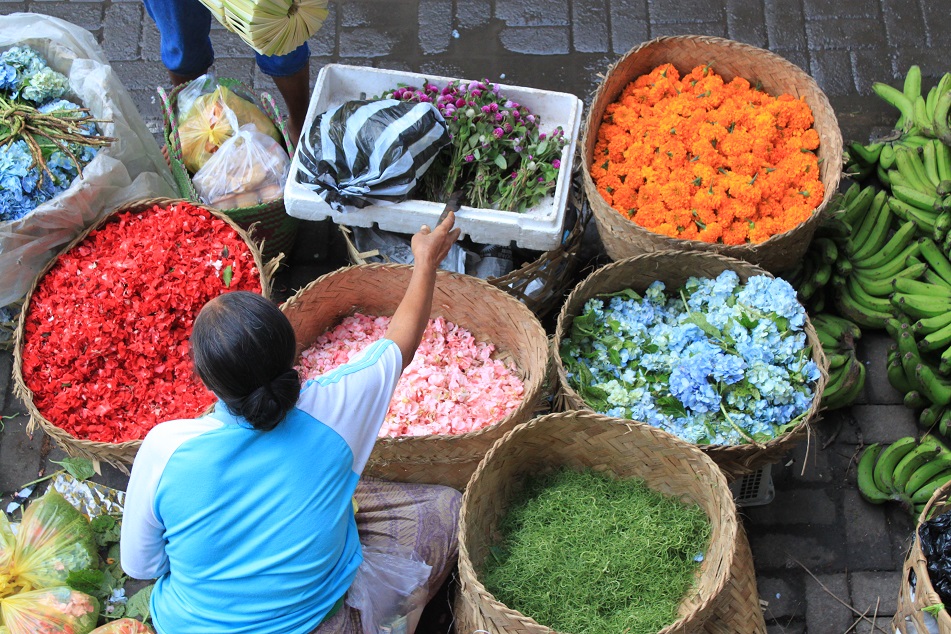
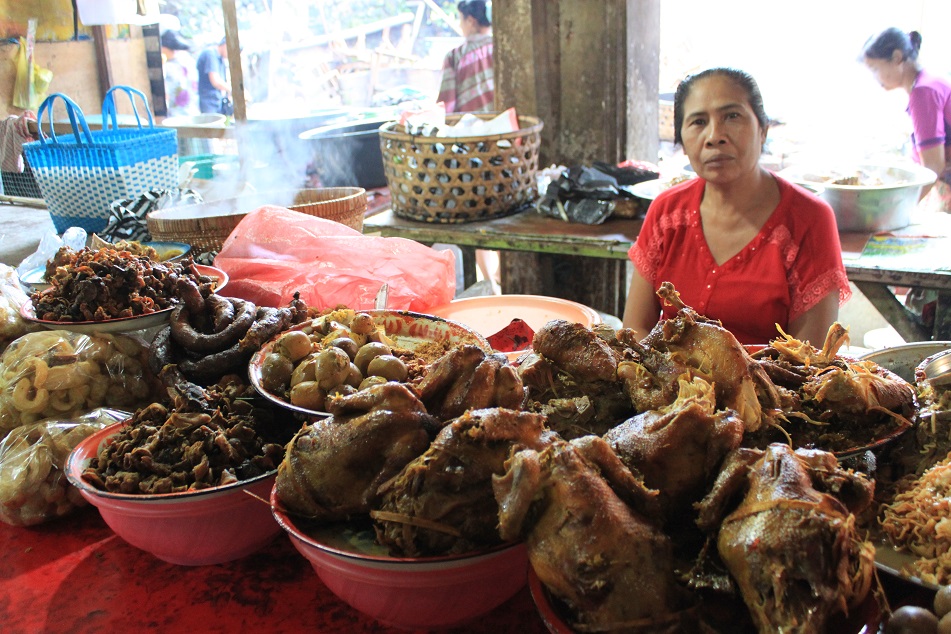

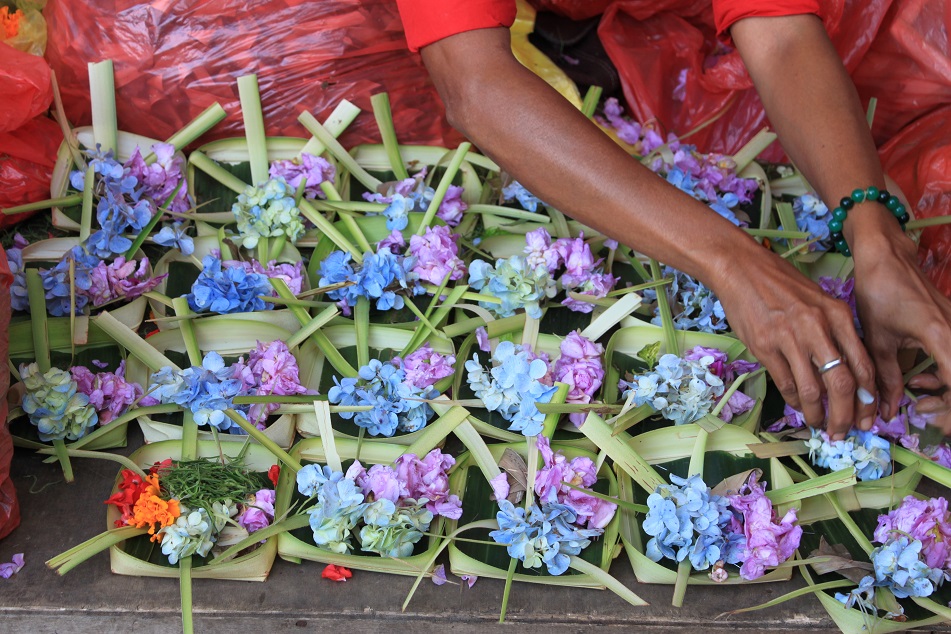
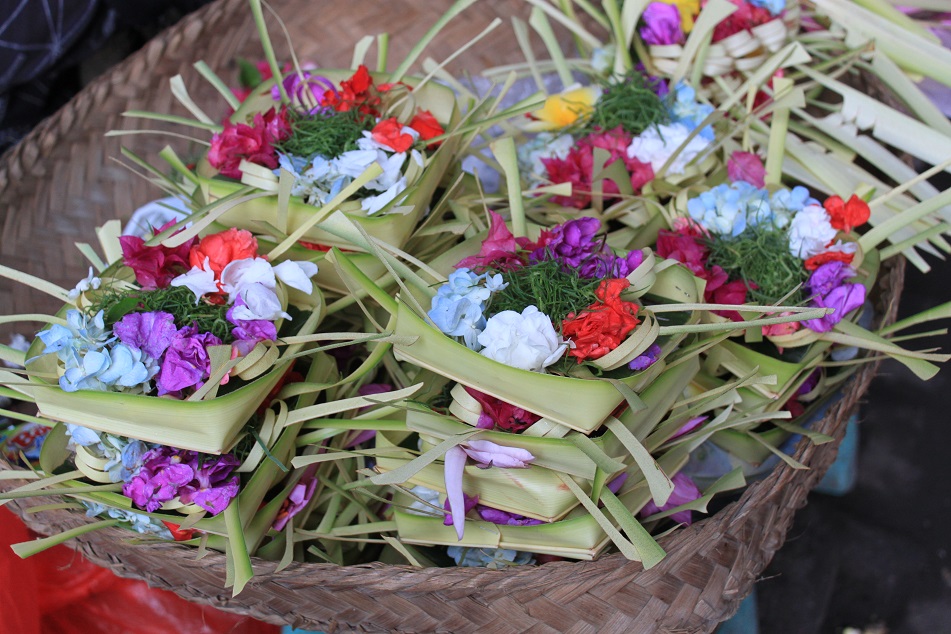
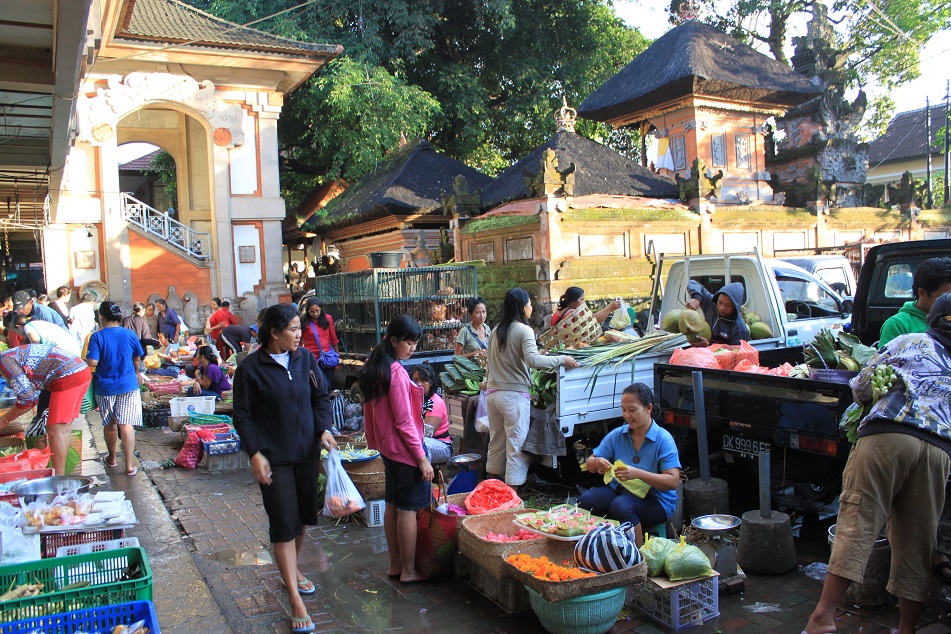
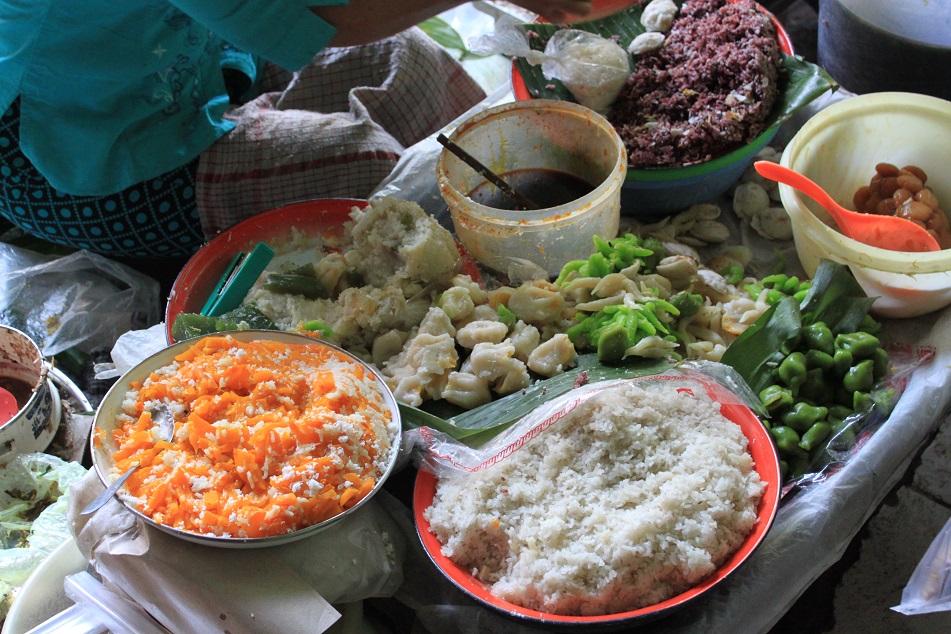
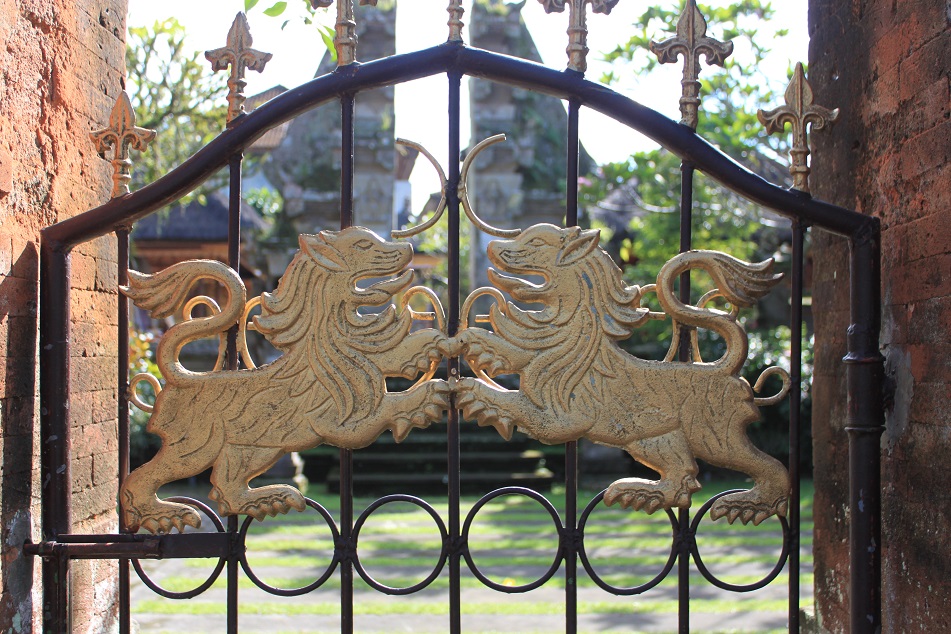

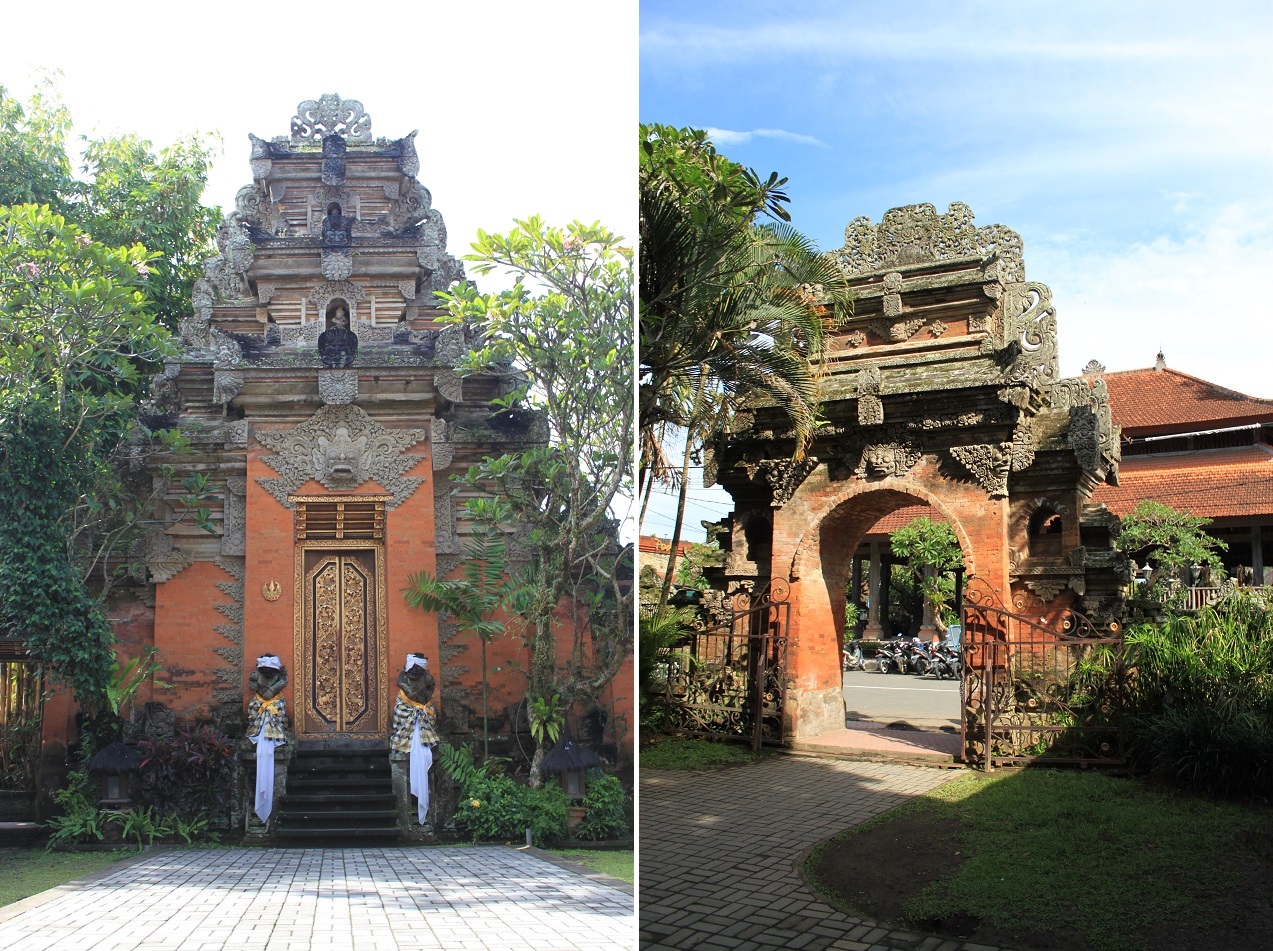

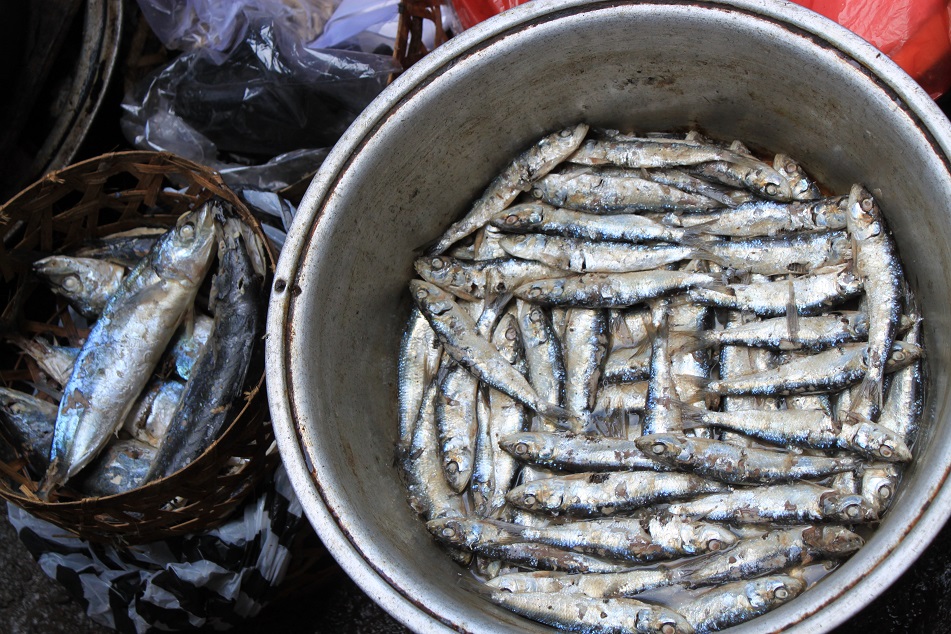
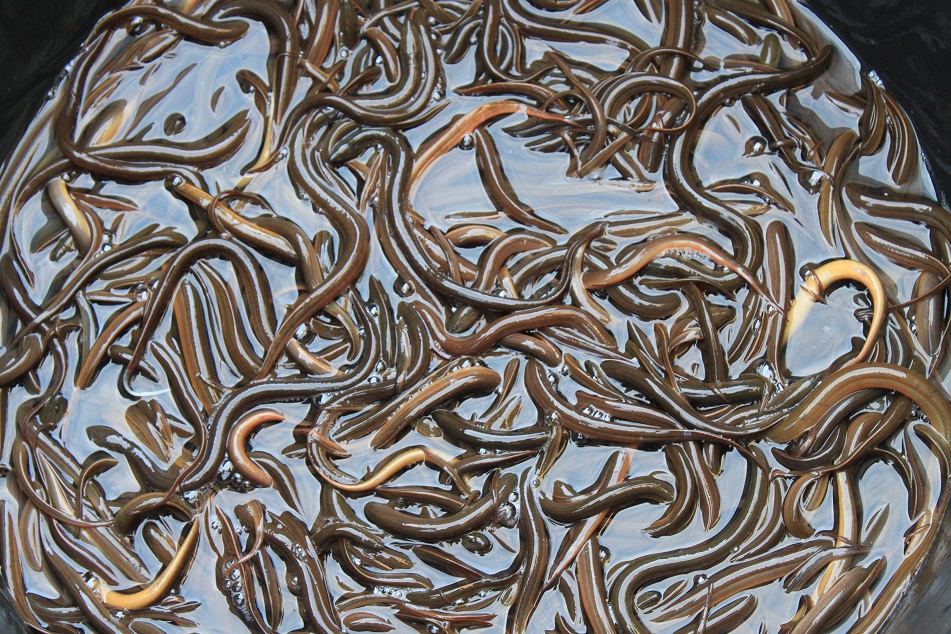

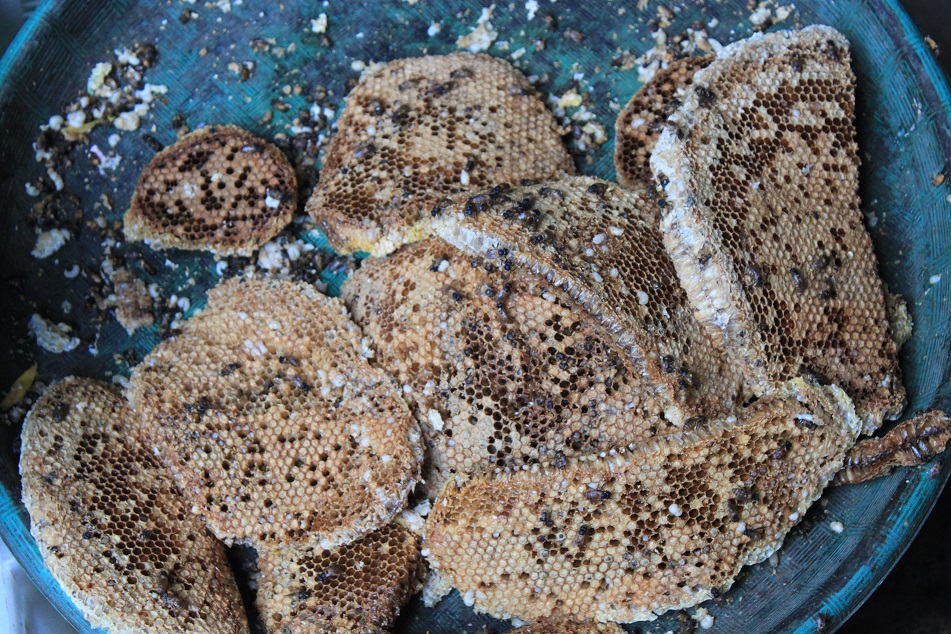

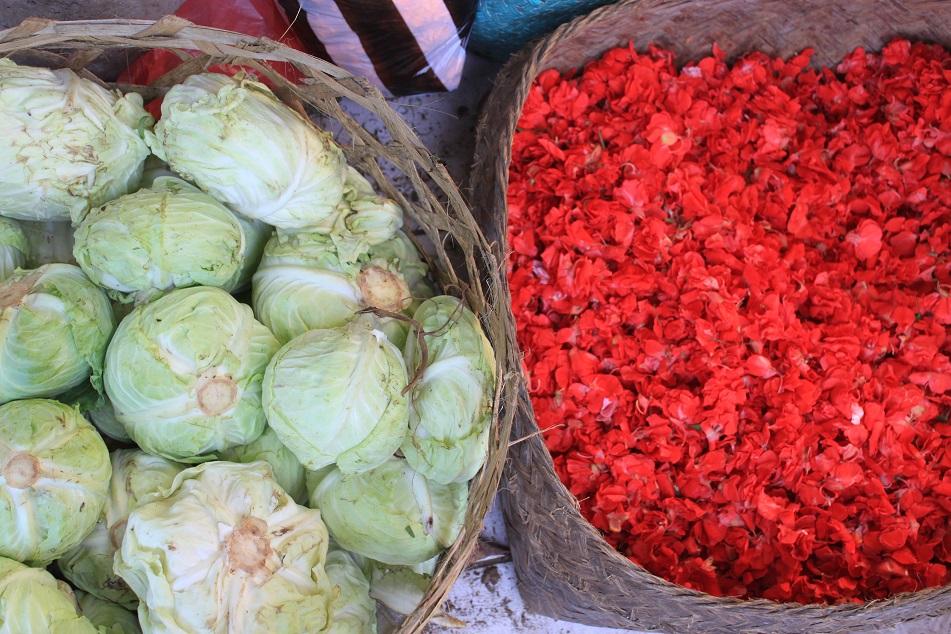
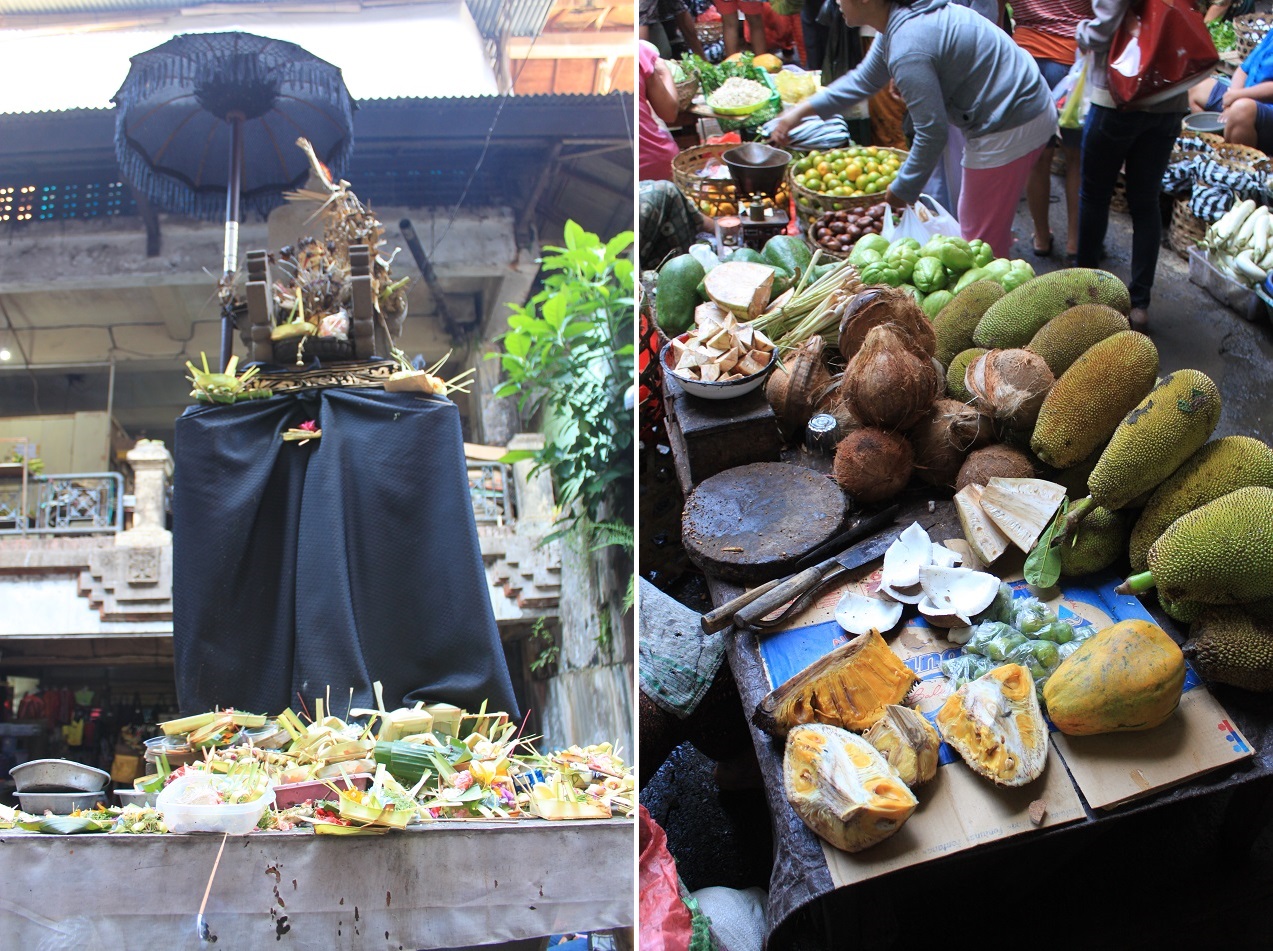
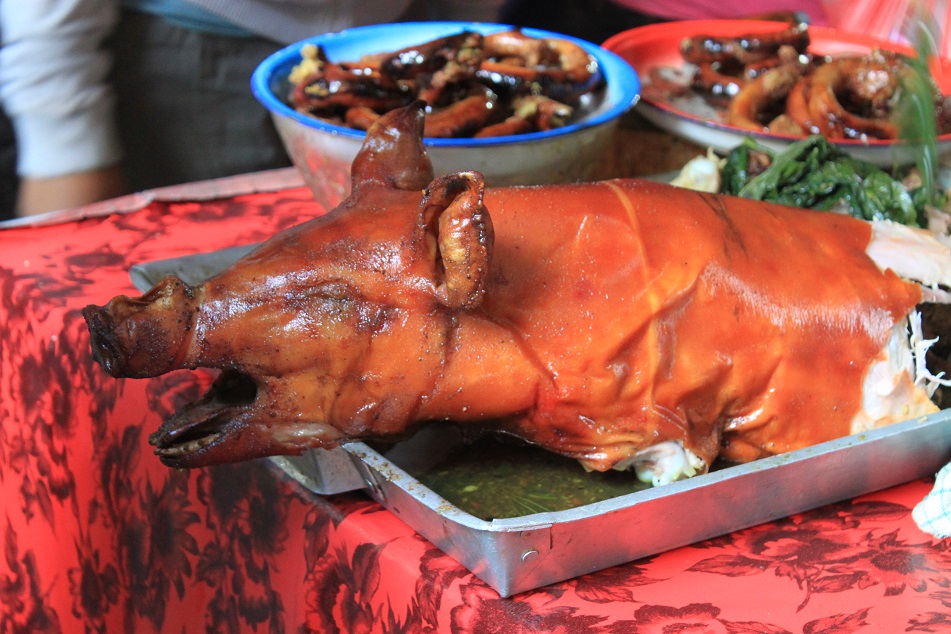
thank you for sharing this .. 🙂
LikeLike
You’re welcome!
LikeLike
What a visual treat, Bama! All those bright colours and unfamiliar sights – I can just imagine the sound of vendors chattering and the smell of breakfast being prepared. I’d love to try salak and fern, not to mention Balinese roasted pig (babi guling?). Looking forward to your account of ayam betutu and the other local dishes. 🙂
LikeLike
It was such a feast for the eyes, indeed! Honestly salak is not my favorite fruit. I tried it once when I was little and never tried it again until a friend ‘forced’ me when I was in college. It was not as bad as I thought, but still. 🙂 Knowing you, I think you would love to try babi guling in Bali. The post on Balinese dishes will have to wait until a few more posts on some interesting places on the island. 🙂
LikeLike
Been to Bali twice but never got the chance to visit Ubud. I missed a lot!!!
LikeLike
The next time you go make sure Ubud is in your list, and immerse in one of the cultural activities! 🙂
LikeLike
I definitely will! Might try to find a temporary place to stay longer too (the last time I was in Legian, I stayed there for almost two months). Once I saw those rose petals in your photos, I really wanted to try to make some rose essence out of ’em! 😀
LikeLike
Wow, I didn’t know you stayed for that long in Legian. There are a lot of good accommodations in Ubud even though I have never stayed in the area. I’ve heard of a tea made from the essence of a hibiscus. So, making some rose essence sounds interesting.
LikeLike
Hibiscus tea! That’s interesting. Thanks for the info, will search for more info about it. I am a flower lover! (and by that, I mean I consume them a lot, as food!)
My friend said if I kept consuming flowers that much, people would think that I was trying to be the next Suzanna, the legendary horror movie star. LOL
When I go there, I’ll open this post as one of my references! 😀
LikeLike
Love every single moment we had there, like a festival for our five senses. And the way you wrote this journal, especially the first paragraph is so beautiful.
Can’t wait to show you some of my favourite ‘hidden places’ in Jogja this Tuesday. Siap mase? 🙂
LikeLike
Thanks for insisting to go to Ubud Market in the wee hours, especially after that night in Warung Made when Irma and I pushed ourselves to the limit. 🙂 I’m surely ready for Jogja.
LikeLike
What night at Made? :p
LikeLike
Bali is on my travel bucket list, and seeing your beautiful images has made me want to go even more! 🙂
LikeLike
When you go to Bali, make sure you also spend some time in the less touristy places to get the real feel of Balinese culture. 🙂
LikeLike
I’m a huge fan of Ubud but I have never been to its local market, seems fun anyway! Oh your pics drag my intention to visit the market on the next visit. Thank you for sharing! 🙂
LikeLike
Oh you definitely have to – there is a cornucopia of interesting things in the market. It is undoubtedly one of the most interesting traditional markets that I’ve been to. Thanks for dropping by, Angga!
LikeLike
Gorgeous – i want to go!
LikeLike
Thanks Alex! Starting this year, there will be direct flights from London to Jakarta, then you can connect to Bali.
LikeLike
🙂
LikeLike
So, have you found the house of the vendor of ayam betutu? I’m curious to know. One friend from jalansutra told me that ayam/bebek betutu pak Linggih is the best one in Ubud, but unfortunately he couldn’t recall the exact address
LikeLike
We actually did, but I’ll keep the photos for a special post on the dishes of Bali. 🙂 The one that I tried was Pak Sanur’s ayam betutu.
LikeLike
ok, pak Sanur that is #noted
matur suksma, Bama! 🙂
LikeLike
Suksma mewali! 🙂
LikeLike
Really wonderful pictures!
LikeLike
Thanks Peter!
LikeLike
Lovely photos!!!
LikeLike
Thanks Nicole! It’s nice to have you back here. 🙂
LikeLike
Yes, I’ve been so busy these days that sadly I’ve had a hard time keeping up on my favorite blogs! But I’ll get there again! I realize how much I’ve been missing! (Not due to lack of interest but time). 🙂
LikeLike
Same here, Nicole. I will surely catch up with the blogs which I like since my early years of blogging, including yours! 🙂
LikeLike
I love it, so colorfull 🙂
LikeLike
Thanks! It’s hard to not take colorful and interesting pictures from Ubud. 🙂
LikeLike
A great glimpse into the market. Did you find the vendor you went looking for?
LikeLike
Thanks! I did find him, but I will dedicate a post on Balinese dishes later on. 🙂
LikeLike
Seeing what locals buy and eat makes a foreign trip more memorable – it’s almost like peeking on someone’s kitchen. Now you got me wondering what ayam betutu looks and tastes like. In the Philippines, we go crazy over roast pig (called lechon)
LikeLike
True! I just returned from a business trip to Jogja – Javanese cultural capital – and managed to sneak in an excursion of Javanese authentic culinary adventure, including a visit to a traditional kitchen. Please be patient for the pictures of the dishes. 🙂
LikeLike
Your posts about the food are so great. The view of the market from above shows so well the astounding variety of shapes, sizes, and colors of both the produce and the containers. If only we could smell them! The beautiful Canang Sari are certainly worthy of any offering.
The markets are of course similar to those in Mexico, and I see some of the same tropical fruits.
LikeLike
Thanks Marilyn! Ubud Market was such a colorful place. It was hard to rest my camera because there were so many interesting and unique things to take pictures of. Now I wonder how the Mexican markets are like. Will definitely check them out when I travel to the country one day!
LikeLike
What a visual feast! Beautiful pictures!
LikeLike
Merci Anna!
LikeLike
wow, it’s nice picture When will u visit Korea? haha~
LikeLike
Thanks! I have been considering to visit Korea for some time now. Hopefully I’ll go there soon.
LikeLike
Oh my goodness, Ubud is a such a rich sensory indulgence indeed. You photos said it all. I heard so many great things about Ubud and I look forward to immersing my senses in it one day.
LikeLike
It truly is, Marisol! Despite the mass tourism, I can see why people keep coming to Ubud. It has its own charm which is not likely to fade away. One day if you go to Bali, I’ll let you know some of my favorite places! 🙂
LikeLike
OMG ! These pictures are sensational !
LikeLike
Thank you so much!
LikeLike
Your post conveys the bustling, colourful vibe of the market Bama! A true feast for the senses! And your photos are fabulous as always. Particularly love the shot of the vendors outside the temple.
LikeLike
Thank you Madhu! I imagine you would take some beautiful pictures as well when you go to Ubud one day. It is truly an inspiring place with so many sensory temptations around. 🙂
LikeLike
This place reminds me of our town’s market back in the Philippines. I think that ayam betutu is similar to our famous kakanin–one of my favorites. Great account of the trip, Bama, as always.
By the way, been trying to find your Freshly Press entry and sorry to say this: I am having a hard time. Could you give me the title, please?
LikeLike
I can imagine how many similarities our countries share, Sony. When I was in Manila I felt more like in Jakarta than in a foreign land. 🙂
My Freshly Pressed entry was the one on Ta Prohm in Cambodia which was published back in my early years of blogging. You can read it here: https://harindabama.com/2011/08/01/ta-prohm-a-temple-amidst-the-woods/
LikeLike
Freshly Pressed
LikeLike
What beautiful pictures! I feel like I can smell the spices and colors!
LikeLike
Thank you Cathy! Ubud Market was really a very nice place to explore. But make sure to come there early in the morning.
LikeLike
Thanks for sharing your pictures, it’s very hard for us in Europe to travel there, but watching such sights makes it easier to dream them 😛
LikeLike
You’re welcome, Ilianna! I think you can go to Bali by transiting through one of the Middle Eastern countries. As far as I know Qatar Airways have direct flight to Bali. Anyway, I’m glad you enjoyed the pictures. 🙂
LikeLike
Yes but they are really really expensive for students..
Thanks anyways for posting all these!
LikeLike
Never say never. 🙂 You’re welcome!
LikeLike
Great inspiration and wonderful pictures! I’m more and more looking forward to my stay in Ubud end of this year…
LikeLike
Thanks Susann! If you’re really into yoga, there’s a yoga haven in the middle of the rice fields in Ubud called Fivelements where the latest TEDx Ubud was held. It was such a cool and peaceful place.
LikeLike
Bama, thanks for the tip.
LikeLike
You’re welcome Susann!
LikeLike
I will be staying just outside of Ubud for several days coming up on two months from now. I’m pretty excited despite the fact I’ve heard lots of negative things about the touristy nature of Ubud and the rest of Bali. Visiting markets is always near the top of my list while traveling and this market looks quite nice–not too touristy either, from the looks of your photographs. Thanks for posting!
LikeLike
The thing about places is Bali is, most of them managed to retain its cultural charm despite the mass tourism. Since last year, I found traditional market as one of the most interesting places a city can offer. Thanks for dropping by!
LikeLike
I visited this market a few years ago to learn all about balinese food and spices before a cooking class, it was such a fantastic experience. Thanks for the reminder and the great photos! 🙂
LikeLike
That must be a very interesting experience! I remember falling in love with Lao food last year and wished I had more time to attend a cooking class there. I’m glad this post reminds you of one of your great memories. 🙂
LikeLike
Gosh, I love the colours on markets like these. Doesn’t really matter where you are in the world, when you visit a market of this kind, you’re in for a visual celebration. Thanks for sharing these.
LikeLike
My pleasure Thosrten! A few years ago I never took traditional markets seriously, but today I know that it’s one of the most interesting places in a city/town.
LikeLike
I totally agree. It really shows the culture.
LikeLike
Reblogged this on The Reiter Report and commented:
This is such a wonderful and inspiring blog that gives you an international overview on different cultures. You really cannot go wrong with this.
LikeLike
Thanks a lot for the reblog and your kind words!
LikeLike
You’re welcome 🙂 Something went wrong with the reblog though. I’ll try it again today to make sure it works properly 🙂
LikeLike
Beautiful photos, love them.
LikeLike
Thanks for your lovely comment!
LikeLike
So beautiful! And so rich in culture! Reminds me of the markets in Georgetown, Guyana!
LikeLike
Visiting traditional markets is always an interesting thing to do. I constantly get something new in each visit.
LikeLike
Awesome pictures,Love the way you described,Wonderful write up.
LikeLike
Thanks again Praveena! I really appreciate your encouraging comments!
LikeLike
so beautiful.. love Bali so much… thanks for sharing..
LikeLike
You’re welcome Si Tembem dan Miss Rempong! 🙂 Thanks for dropping by!
LikeLike
LOL.. thanks for visited my blog..
LikeLike
Pingback: Ubud: A Sensory Indulgence | invisible (no longer)
This is so amazing. so full of colors and very beautiful! Pls keep on taking these kind of pictures! (–,)
LikeLike
Thank you Beaut! It’s hard not to take such colorful pictures while traveling in Bali, especially right at its cultural center. And of course I’ll keep taking pictures from the places I visit. 🙂
LikeLike
I’ll include it in my list, a close friend of mine also convinced me to visit. =)
LikeLike
Bama, love the bird’s eye views of Ubud’s market! We tried snake’s skin fruit there for the first time and came to enjoy its unique flavor. Wish we could easily get it in Europe!
LikeLike
Thanks Tricia! Ubud Market was such a fascinating place filled with so many colors and scents. So I had to go up to capture them in one frame. 🙂 Speaking of the fruit, I have to admit that I’m not a big fan of it. So it’s nice to know that you enjoyed it better than I did.
LikeLike
Reblogged this on maverickbird.
LikeLike